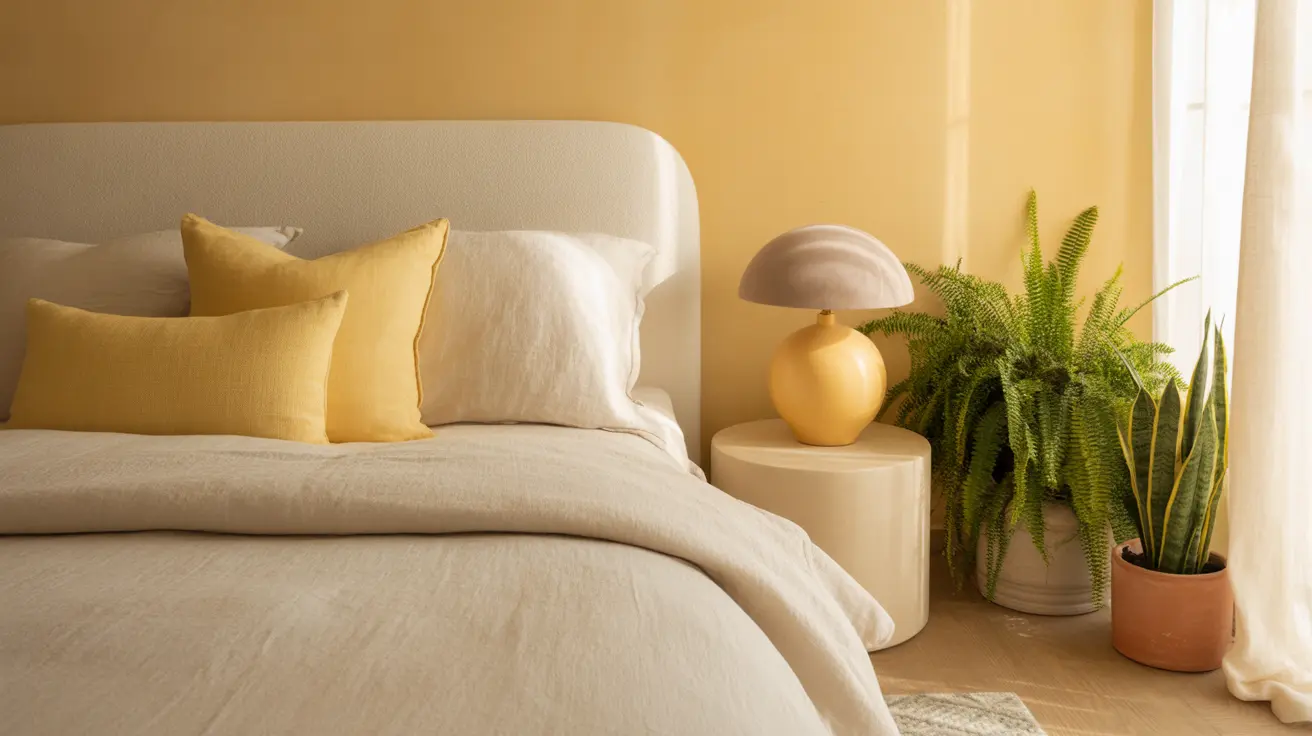The color of your bedroom walls can significantly impact your sleep quality and overall well-being. While many people are drawn to yellow for its cheerful and warm qualities, it's essential to understand how this color choice might affect your sleep environment and relaxation potential.
In this comprehensive guide, we'll explore the psychological effects of yellow in the bedroom, examine different shades and their impacts, and help you make an informed decision about whether yellow is the right choice for your sleep sanctuary.
The Psychology of Yellow in Bedroom Design
Yellow is commonly associated with sunshine, energy, and optimism. In bedroom design, these associations can have both positive and negative effects on your sleep environment. The key lies in understanding how different yellow tones can influence your mood and relaxation levels.
Benefits of Yellow in the Bedroom
When used appropriately, yellow can offer several advantages in bedroom design:
- Creates a warm, welcoming atmosphere
- Promotes positive morning energy
- Helps combat seasonal affective disorder (SAD)
- Makes small spaces feel larger and more open
Understanding Different Yellow Shades
Not all yellows are created equal when it comes to bedroom design. The intensity and undertone of yellow can dramatically affect its impact on sleep and relaxation:
- Pale butter yellow: Gentle and soothing
- Cream yellow: Neutral and versatile
- Soft honey yellow: Warm and comforting
- Pastel yellow: Light and airy
Optimal Use of Yellow for Better Sleep
To create a sleep-friendly environment with yellow walls, consider these important factors:
Paint Finish Selection
The right paint finish can enhance the relaxing qualities of yellow walls:
- Matte: Reduces glare and creates a softer appearance
- Eggshell: Offers subtle warmth without being too reflective
- Satin: Provides a gentle glow while remaining understated
Balancing Yellow with Other Colors
Creating the right color balance is crucial for a restful bedroom environment:
- Pair with neutral grays for a calming effect
- Add white accents to create visual breaks
- Incorporate natural wood tones for warmth
- Use blue or green accessories to balance energy levels
Warning Signs and Considerations
Before committing to yellow walls, be aware of potential challenges:
- Bright or neon yellows can increase anxiety and restlessness
- Intense yellow may interfere with melatonin production
- Some people may find yellow overstimulating
- Southern-facing rooms might amplify yellow's intensity
Frequently Asked Questions
Is yellow a good color for a bedroom if I want to promote relaxation and better sleep?
Yellow can be suitable for a bedroom when used correctly. Opt for soft, muted yellow tones rather than bright or intense shades. Pale butter yellow or cream colors can create a warm, relaxing atmosphere without being overstimulating.
How do lighter shades of yellow affect mood and sleep quality in a bedroom?
Lighter yellow shades typically have a gentle, uplifting effect on mood while maintaining a calm atmosphere. These softer tones can help create a peaceful environment without the potentially disruptive effects of brighter yellows.
What are the risks of using bright or vivid yellow tones in a bedroom?
Bright yellow can be overstimulating, potentially increasing anxiety and making it harder to fall asleep. These intense shades may also interfere with natural sleep-wake cycles and create an energetic atmosphere that's counterproductive to rest.
Which bedroom paint finishes work best to enhance relaxation when using yellow walls?
Matte and eggshell finishes work best for yellow bedroom walls. These finishes minimize glare and create a softer, more soothing appearance that's conducive to relaxation and rest.
How does yellow compare to blue and green as a color choice for a sleep-friendly bedroom?
While blue and green are traditionally considered more calming colors for bedrooms, soft yellows can be equally effective when properly executed. The key difference is that yellow requires more careful consideration of shade and intensity to achieve a sleep-friendly environment.




